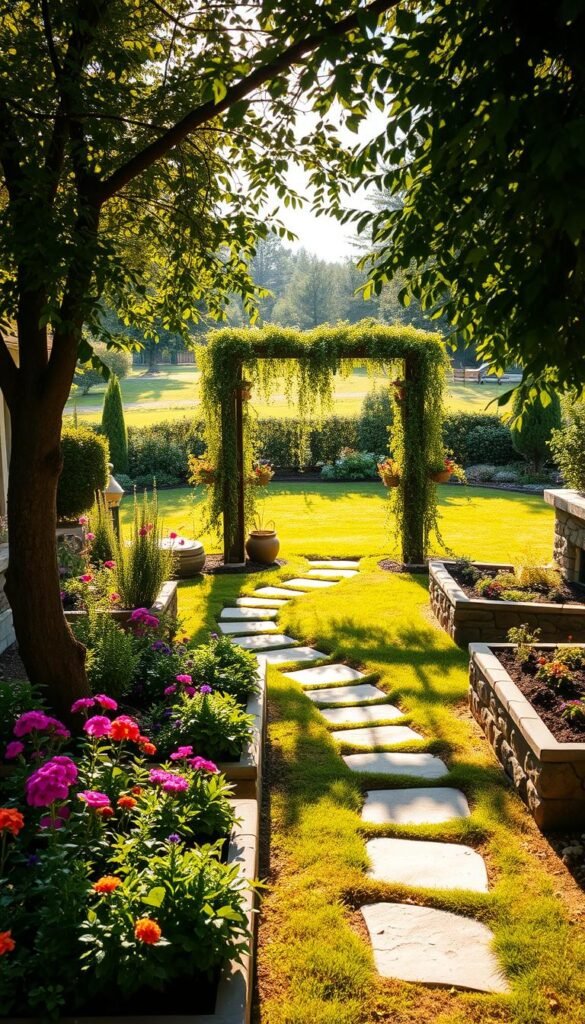Your property’s untapped possibilities begin with reimagining how you use its natural layout. Professional designers specialize in crafting solutions for compact yards, awkward angles, and narrow side plots – proving size limitations don’t define quality.
Smaller areas encourage inventive thinking. Vertical planters, multi-functional furniture, and strategic lighting can turn cramped corners into cozy retreats. Discover how elevating your space with a gardening adds depth without sacrificing square footage.
This guide reveals techniques used by experts nationwide. You’ll learn to combine practicality with visual appeal, whether creating entertainment zones or peaceful sanctuaries. Compact layouts often yield smarter storage solutions and lower maintenance needs compared to sprawling properties.
We’ll walk through every phase, from assessing your land’s unique features to selecting climate-appropriate plants. Expect actionable strategies for maximizing sunlight exposure, improving traffic flow, and choosing materials that withstand local weather patterns.
Your family’s lifestyle drives these transformations. Maybe you need play areas for kids, vegetable beds for homegrown meals, or simply a quiet spot to unwind. The right approach turns dreams into functional realities, no bulldozer required.
Assess Your Outdoor Space and Define Your Priorities
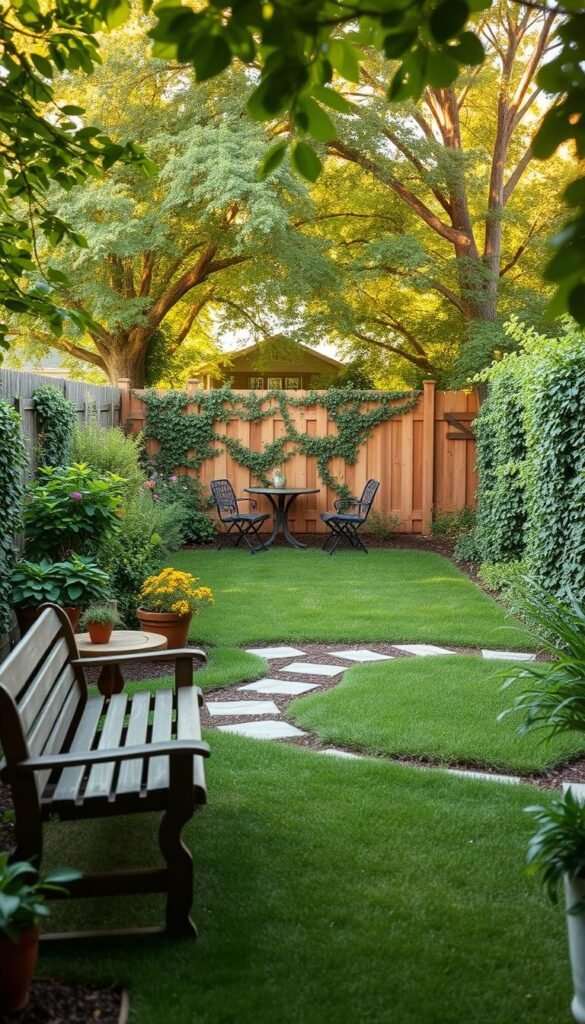
Before diving into design, take time to map out what truly matters for your outdoor living experience. This critical planning phase helps you avoid costly mistakes and ensures every square foot serves a purpose.
Identify must-have features for your family
Start by listing non-negotiable elements that align with daily routines. Do your kids need room for games? Does your pet require shaded spots? Maybe you crave a quiet reading nook. Rank these needs based on:
- Frequency of use (daily vs. occasional)
- Seasonal versatility
- Multi-generational appeal
Evaluate space limitations and potential
Grab a tape measure and sketch your yard’s dimensions. Note existing trees, slopes, or utility lines that could impact your layout. Ask yourself:
- Which areas get morning sun vs. afternoon shade?
- Where does water pool after rain?
- How wide are pathways between permanent structures?
This reality check helps balance dreams with practical solutions. A compact patio might host foldable furniture instead of built-in seating, while sloped terrain could become tiered planters. Remember – smart planning today prevents space regrets tomorrow.
Plan a Functional Layout for Your Backyard
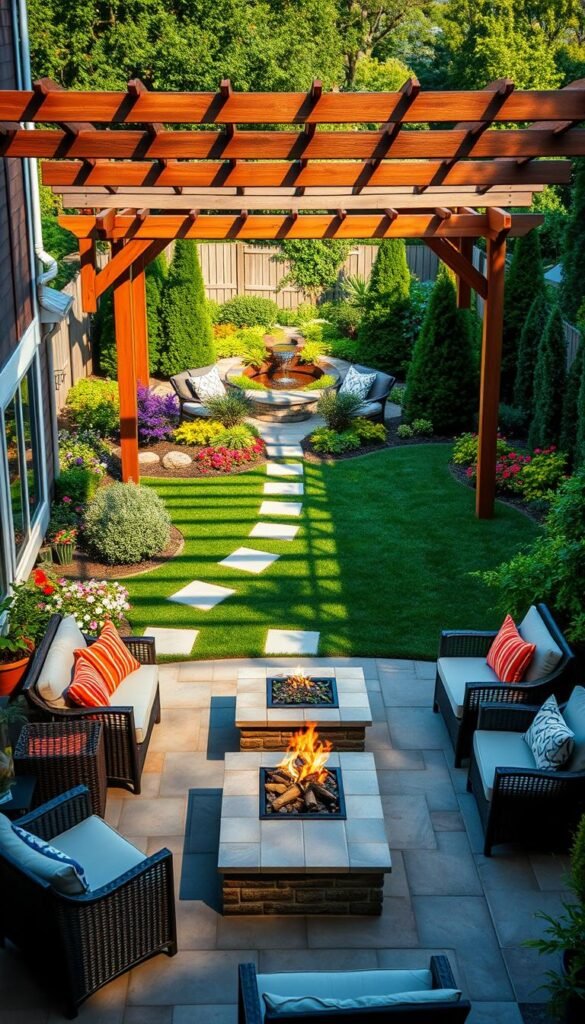
Effective backyard designs start with understanding movement patterns and usage zones. Think of your space as a series of connected experiences – cooking areas should flow naturally to dining spots, while play zones need safe boundaries. Professionals often use “activity mapping” to visualize how you’ll actually live in your yard.
Start by sketching how people move from your door to key areas. Wide, curved pathways prevent bottlenecks better than narrow straight ones. Leave 36-42 inches for main walkways – enough for two people to stroll side-by-side. For tighter spaces, consider stepping stones that guide movement without dominating the design.
Don’t forget maintenance access! Hidden service paths let you water plants or trim hedges without trampling flower beds. Pair this with small-space gardening hacks to keep every inch productive yet accessible.
Zone noisy and quiet areas thoughtfully. Place fire pits downwind from seating, and position play structures where supervision comes naturally. A good rule? High-energy zones belong closer to the house, while relaxation spots benefit from farther vantage points.
Working with a professional designer pays dividends here. They’ll spot circulation issues you might miss and suggest space-stretching tricks like diagonal paving or multi-level decks. Remember – smart layouts feel spacious even when square footage stays the same.
Embrace Indoor-Outdoor Living
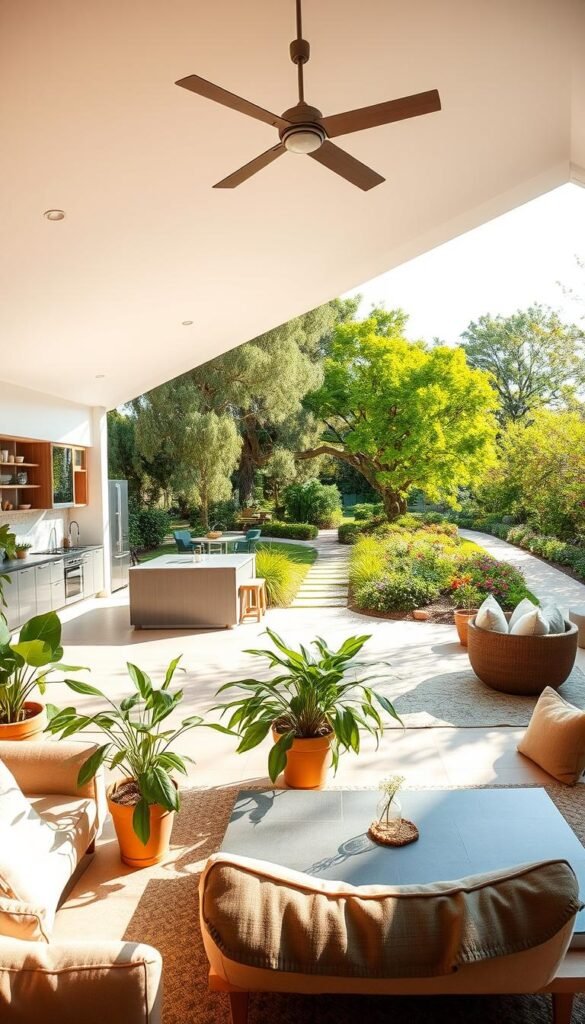
Transform your living experience by dissolving the walls between nature and your interior. Strategic design choices can make your home and garden feel like two parts of a unified whole – especially valuable in compact yards where every inch counts.
Create seamless transitions with doors and windows
Swap solid doors for glass-paned French or sliding models. These act as giant picture frames showcasing your outdoor space while allowing easy access. Pair them with:
- Matching interior/exterior flooring materials
- Weather-resistant curtains that mirror indoor drapes
- Identical hardware finishes inside and out
| Transition Strategy | Indoor Benefit | Outdoor Benefit | Cost Level |
|---|---|---|---|
| French Doors | Natural light boost | Expands entertaining space | $$ |
| Flooring Continuity | Visual expansion | Easy cleanup | $ |
| Window Walls | Year-round views | Protects patio areas | $$$ |
Extend your home’s feel into your garden
Carry your interior design language outside through color schemes and furniture styles. An all-weather rug matching your living room palette creates instant cohesion. Use these tricks:
- Repeat cushion patterns on outdoor seating
- Install matching light fixtures on porches
- Place potted herbs near kitchen windows
For evening continuity, choose path lights that mimic your interior’s warm/cool tones. This subtle look helps spaces feel connected even after dark.
Incorporate Smart Design Strategies for Small Yards
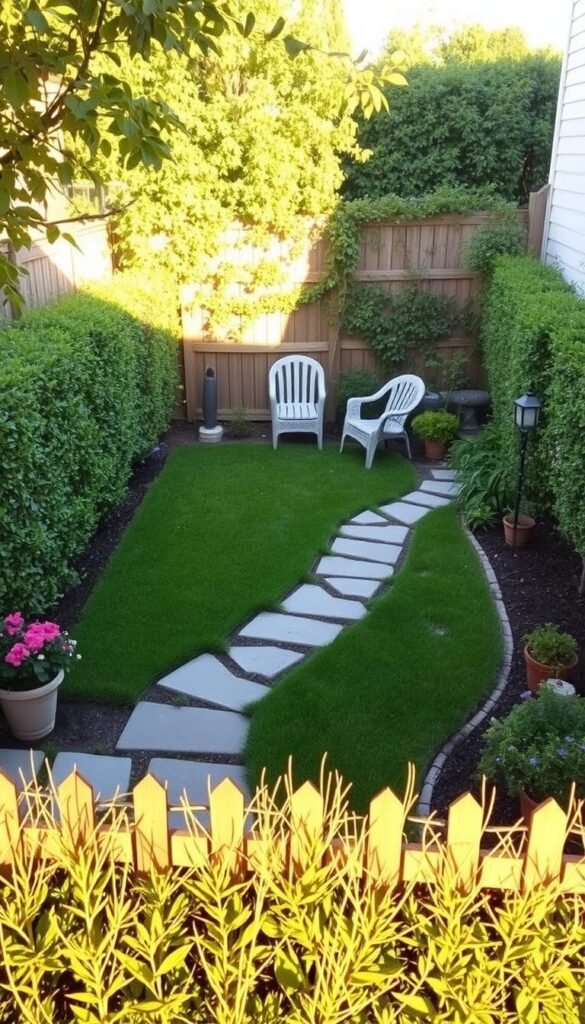
Small yards demand clever solutions that trick the eye into seeing expansiveness. Start by eliminating visual barriers like bulky railings around decks or patios. Open sight lines create depth, making compact areas feel airier than their measurements suggest.
Master the art of visual expansion
Sharp edges define zones without shrinking your space. Try crisp borders between lawn and flower beds using metal or stone edging. This simple trick adds structure while preventing plants from spilling onto walkways.
Follow these principles for maximum impact:
- Repeat materials – matching pavers or planters build rhythm
- Group similar plants in clusters for bold statements
- Use diagonal patterns in pathways to stretch perspectives
Simplify your plant palette to three main varieties. Mass plantings create calm, while scattered species cause chaos. For inspiration, explore creative gardening solutions that balance variety with cohesion.
Always check sightlines from windows and seating areas. Guide eyes toward focal points like water features or specimen trees. Smart design turns limitations into advantages, proving tiny yards can deliver big experiences.
Back Garden Ideas to Make the Most of Your Outdoor Area
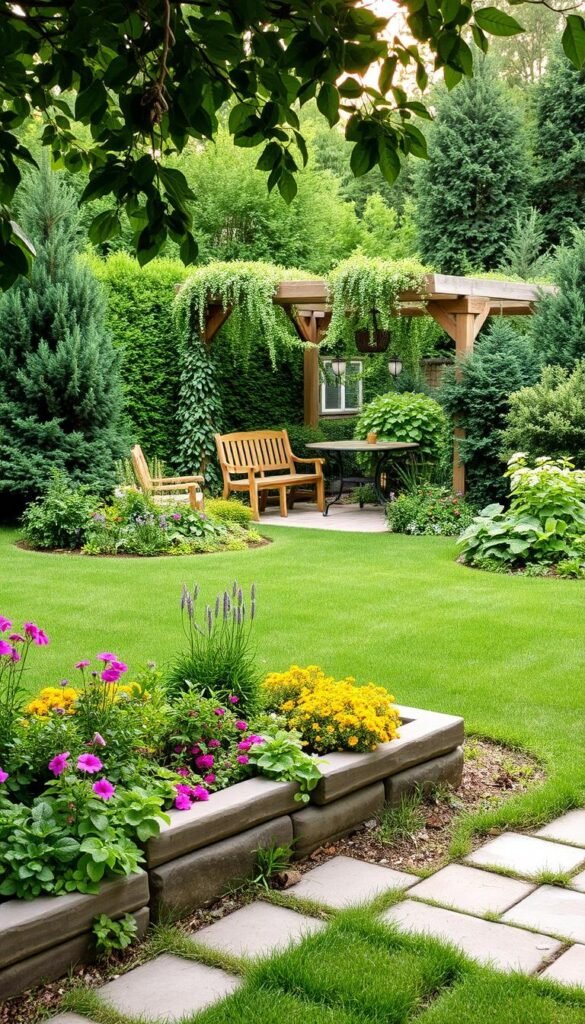
Limited square footage sparks innovation in outdoor design. Compact spaces thrive when you layer textures, colors, and functions vertically. Think hanging herb gardens above foldable bistro sets or trellises supporting climbing roses that double as privacy screens.
Multi-functional pieces save space while adding character. A storage bench holds gardening tools by day and transforms into guest seating at night. Opt for slim-profile furniture with weather-resistant cushions in bold patterns to create visual interest without clutter.
| Design Strategy | Space Impact | Cost Level | Maintenance |
|---|---|---|---|
| Vertical Planters | +70% usable area | $ | Low |
| Mirror Installations | 2x visual depth | $$ | Medium |
| Modular Seating | Flexible layouts | $$ | Low |
| Dwarf Tree Varieties | Full canopy | $$$ | High |
Strategic plant selection makes small gardens feel lush. Choose dwarf fruit trees or columnar evergreens that grow upward instead of outward. Pair them with creeping thyme between pavers – it releases fragrance when stepped on and stays under 2 inches tall.
Lighting transforms cramped corners after sunset. Solar-powered string lights outline pathways, while waterproof LED strips under benches create ambient glow. These touches extend your enjoyment of the space well into evening hours.
Add Vertical Interest to Maximize Limited Space
Looking up could be the secret to expanding your yard’s potential. Vertical solutions add layers of greenery and function without crowding ground areas. They turn blank walls and empty airspace into living features that enhance privacy and productivity.
Grow upward with smart structures
Climbing plants like jasmine or clematis transform fences into fragrant screens. Install trellises against sun-baked walls to support vegetable vines or flowering species. These living curtains soften hard surfaces while boosting your growing capacity.
| Vertical Element | Primary Benefit | Space Saved | Cost Level |
|---|---|---|---|
| Trellises | Plant support + privacy | 65% | $ |
| Hanging Planters | Herb cultivation | 80% | $ |
| Pergolas | Shade + structure | 40% | $$ |
| Living Walls | Air purification | 90% | $$$ |
Choose compact trees like columnar apples for vertical accents. Pair them with wall-mounted planters holding thyme or strawberries. This approach keeps pathways clear while delivering visual depth.
For those working with tight quarters, maximize your garden’s potential using tiered stands near seating areas. These hold multiple plants vertically, turning bare corners into conversation starters. Maintenance stays simple – water flows downward through stacked containers.
Integrate Stunning Hardscape Elements
Transform cramped areas into polished retreats using strategic material combinations. Landscaping gains structure when you pair concrete pavers with loose gravel, creating visual flow between zones. This approach defines pathways while softening rigid edges.
Try extending a poured concrete patio with pea gravel borders. The contrast adds modern flair without straining budgets. For cohesive landscape design, match metal edging colors to existing fixtures – this detail elevates both style and function.
Explore smart hardscaping ideas that blend textures effectively. Rough-cut stone steps beside smooth decking create tactile interest. Professionals often install crisp edging between lawns and pathways to prevent grass invasion, saving hours of maintenance.
Balance organic shapes with geometric precision. Angular gravel beds offset curved planting zones, while rectangular pavers guide foot traffic naturally. These elements become your yard’s backbone, supporting plants without competing for attention.
Remember: quality materials age gracefully. Weather-resistant stone and composite decking maintain their charm through seasons, proving smart investments for compact spaces.

